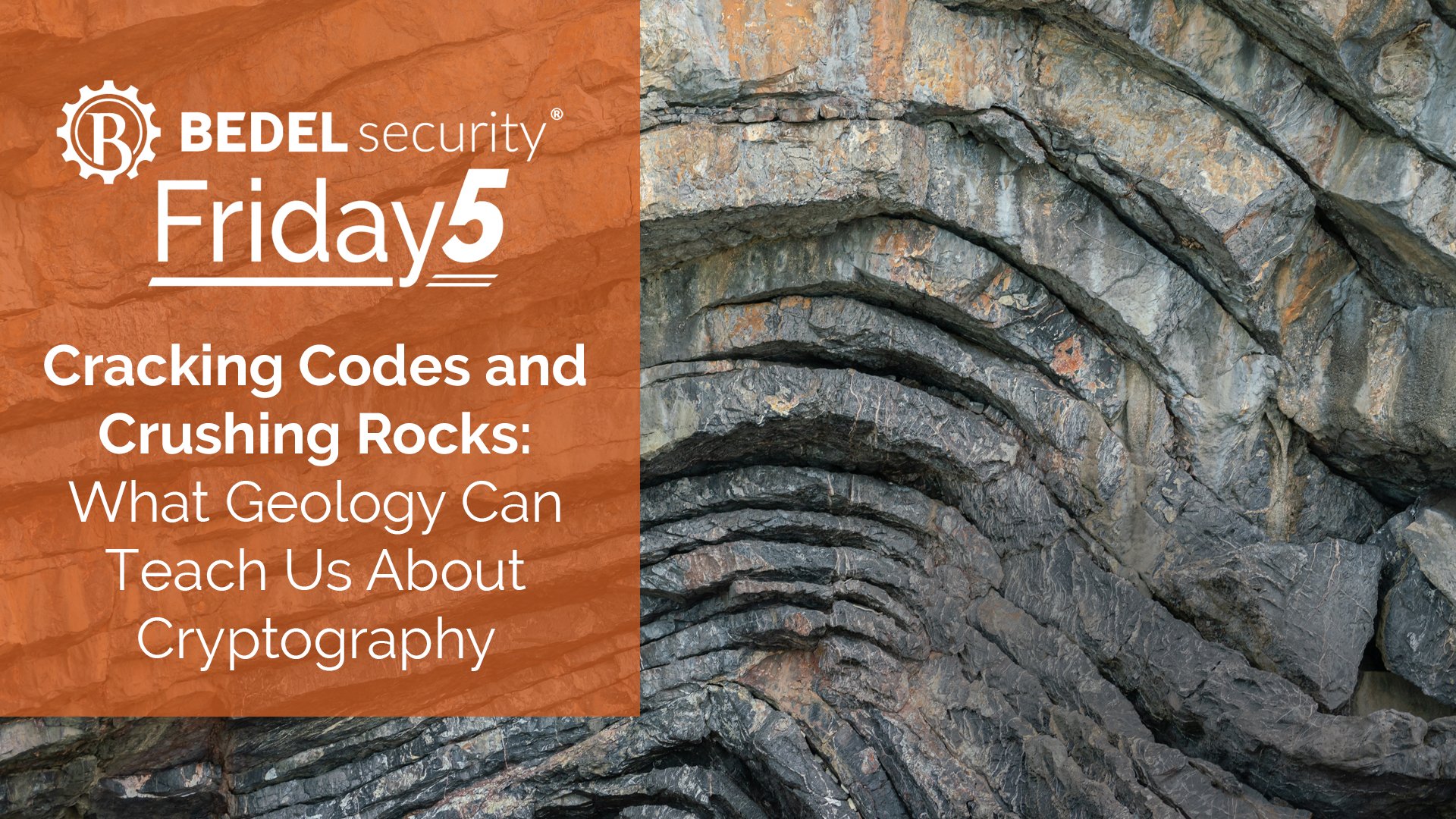Building Resilience Against Nation-State Actors
Given the current international climate, it is critical to maintain vigilant and ongoing monitoring of both cyber and physical threats to the...
2 min read
Andrew Hernandez : Sep 12, 2025

At first glance, geology and cryptography may seem worlds apart—one is the study of rocks, layers, and the passage of deep time; the other, the foundation of digital security in an age of zeroes and ones. But dig a little deeper (pun intended), and you’ll find these two fields share surprising similarities—especially when it comes to breaking things down.
Whether you’re a codebreaker or a geologist, your job often starts the same way: with a solid, complex structure that seems impenetrable.
Geologists study the Earth by peeling back layers of sediment, rock, and time. Cryptographers do the same—only instead of shale and granite, they’re dealing with mathematical operations, permutations, and layers of encryption.
Both disciplines require:
In geology, a tiny fault line or fissure can lead to massive change—a landslide, an earthquake, or the formation of a canyon. In cryptography, a tiny flaw in an algorithm or implementation can compromise what was once thought unbreakable.
Both fields teach a similar lesson: Complex systems can fail due to small, overlooked weaknesses. It’s not about brute force—it’s about knowing where to look.
Rocks form under immense pressure, and today’s cryptographic systems are forged in an environment just as intense—one where the looming force of quantum computing threatens to reshape the very foundations of security. As computational power escalates, especially with the promise (and peril) of quantum algorithms, the pressure on classical encryption mounts relentlessly. Ciphers once as solid as granite—DES, RSA, even some elliptic curve systems—now risk fracturing, vulnerable to quantum attacks that could split them wide open.
Just as tectonic shifts can redefine continents, the advance of quantum computing is poised to transform the cryptographic landscape, demanding new forms of mathematical bedrock on which to build the security of tomorrow.
Geologists often work in timeframes that make most people impatient—millions of years compressed into layers a few feet thick. Similarly, cryptanalysts might spend years developing a side-channel attack, analyzing entropy, or hunting for patterns in ciphertext.
In both cases, breakthroughs come from patience, precision, and pattern recognition—not luck.
So, why compare breaking cryptographic algorithms to geology?
Because both remind us that even the strongest systems can crack over time. The deeper you understand their layers, their flaws, and their formation, the better equipped you are to protect—or deconstruct—them.
Whether you’re studying tectonic plates or elliptic curves, one truth remains: the Earth—and encryption—always hides its secrets in layers.

Given the current international climate, it is critical to maintain vigilant and ongoing monitoring of both cyber and physical threats to the...